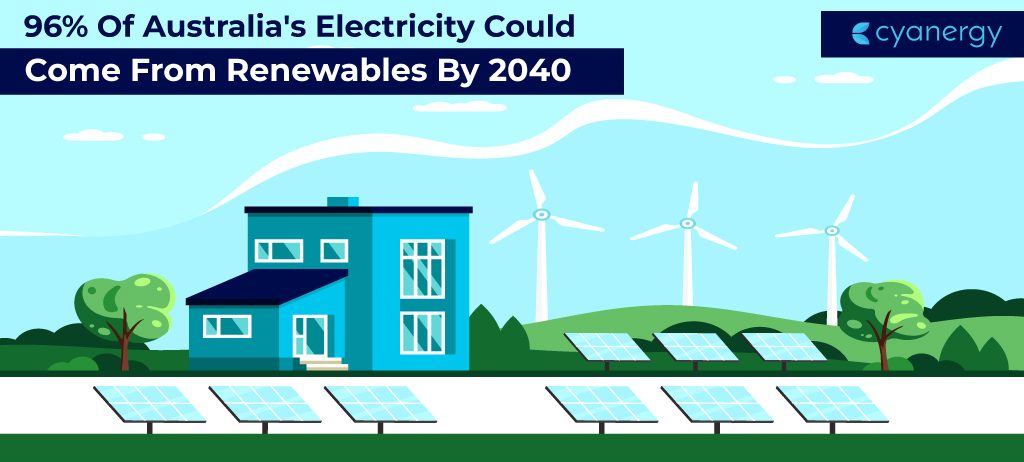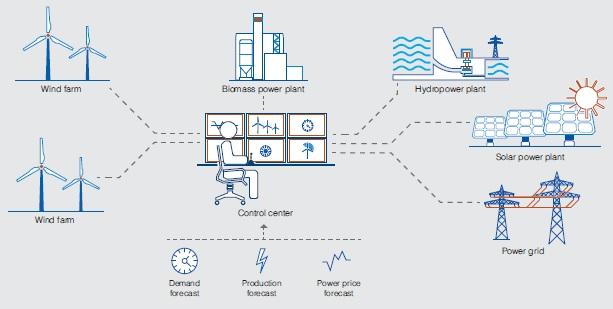Report on Household Energy Efficiency and its Contribution to Sustainable Development Goals in Australia
Introduction: Reframing the National Energy Dialogue
Australia’s national energy discourse has been predominantly characterized by a focus on energy generation, often framed as a conflict between traditional coal power and emerging renewables. However, key energy experts argue this narrative overlooks a critical component: energy demand and efficiency. Luke Menzel of the Energy Efficiency Council highlights that the conversation must expand to include how energy is consumed. This report examines the pivotal role of household energy efficiency as a strategic tool for reducing living costs and, most significantly, for advancing Australia’s commitment to the United Nations’ Sustainable Development Goals (SDGs).
The Critical Role of Energy Efficiency in Achieving the SDGs
Improving energy efficiency in Australian households is a multi-faceted strategy that directly supports the achievement of several key Sustainable Development Goals. Residential properties account for approximately 25% of the nation’s electricity usage and over 10% of its greenhouse gas emissions, making them a crucial sector for intervention.
- SDG 7 (Affordable and Clean Energy): By reducing energy consumption, efficiency measures make energy more affordable for households. They also facilitate the transition to clean energy by complementing technologies like rooftop solar and batteries, making clean energy systems more effective and financially viable.
- SDG 13 (Climate Action): A direct reduction in household energy use, particularly through electrification and moving away from gas, leads to a significant decrease in national greenhouse gas emissions.
- SDG 11 (Sustainable Cities and Communities): Promoting energy-efficient homes contributes to the development of more sustainable, resilient, and healthier living environments. Thermally efficient homes improve well-being and reduce the strain on urban energy infrastructure.
- SDG 12 (Responsible Consumption and Production): Energy efficiency is the cornerstone of responsible energy consumption, ensuring that resources are used judiciously to achieve desired outcomes without waste.
Key Findings from the Institute for Energy Economics and Financial Analysis (IEEFA)
A recent report from the IEEFA provides compelling evidence of the financial and environmental benefits of household energy efficiency, underscoring its potential to advance SDG 7 and SDG 13. The analysis concludes that with targeted interventions, a goal of halving household energy bills within a decade is achievable.
Projected Household Savings and Recommended Measures
The IEEFA report calculated that Australian households could achieve power bill savings of between 82% and 94% by implementing a comprehensive suite of efficiency and electrification measures. These actions directly promote the objectives of SDG 7 by making energy affordable and clean.
- Installation of Renewable Energy Systems: Deploying an 8kW rooftop solar system combined with a 10kWh battery storage unit.
- Efficient Heating and Cooling: Replacing gas or conventional electric heaters with reverse-cycle air conditioning systems.
- Hot Water System Upgrades: Swapping gas or old electric water heaters for modern, high-efficiency heat pumps.
- Modernisation of Kitchen Appliances: Replacing gas cooktops with electric induction technology.
The IEEFA modelling did not include the substantial further gains available from improving a home’s thermal envelope (e.g., insulation, upgraded windows), which enhances comfort and further reduces energy needs, aligning with SDG 11’s goal for sustainable and resilient housing.
Policy Initiatives and Strategic Recommendations
Government policy is identified as a critical enabler for accelerating the adoption of energy efficiency measures. Recent actions and expert recommendations highlight a pathway forward.
- State-Level Action: The Victorian government’s policy to phase out gas connections in new homes from 2027 is recognized as a significant step towards decarbonization, supporting SDG 13.
- Federal Government Support: The Albanese government’s $2.3 billion home battery program, providing substantial discounts, is a key initiative for promoting SDG 7 by encouraging the storage and use of clean energy.
- A National “Renovation Wave”: Reports from the Climateworks Centre advocate for a large-scale renovation initiative targeting Australian homes, particularly those built before 2003 when minimum efficiency standards were introduced. Such a program could yield annual savings of up to $2,200 per household and represents a “no-brainer” for achieving rapid progress on multiple SDGs.
Analysis of Sustainable Development Goals in the Article
1. Which SDGs are addressed or connected to the issues highlighted in the article?
SDG 7: Affordable and Clean Energy
The article’s central theme is making energy more affordable and cleaner for Australian households. It directly discusses energy efficiency, the adoption of renewable energy sources like solar power, and the transition away from fossil fuels (gas), which are all core components of SDG 7.
SDG 11: Sustainable Cities and Communities
The focus on improving the energy efficiency of homes, which are the fundamental units of cities and communities, connects directly to this goal. The article discusses a “renovation wave” for existing housing stock and reducing the environmental footprint of residential buildings, as homes “account for more than 10% of greenhouse gas emissions.”
SDG 13: Climate Action
The article links household energy consumption directly to climate change by mentioning that Australian homes “account for more than 10% of greenhouse gas emissions.” The proposed solutions, such as switching from gas to electric appliances and using renewable energy, are presented as measures to mitigate climate change. It also highlights government policies aimed at these climate-positive actions.
SDG 1: No Poverty
By focusing on measures to “cut rising household bills” and the potential for households to “cut their power bills by more than 90%”, the article addresses the economic burden of high energy costs. Reducing the cost of living is a key factor in preventing households from falling into poverty and improving their economic resilience, which aligns with the objectives of SDG 1.
2. What specific targets under those SDGs can be identified based on the article’s content?
-
SDG 7: Affordable and Clean Energy
- Target 7.1: By 2030, ensure universal access to affordable, reliable and modern energy services. The article’s emphasis on cutting power bills by “between 82% and 94%” directly addresses the affordability of energy for households.
- Target 7.2: By 2030, increase substantially the share of renewable energy in the global energy mix. This is addressed through the recommendation for households to install “an 8kw rooftop solar system and a 10kwh battery.”
- Target 7.3: By 2030, double the global rate of improvement in energy efficiency. This is the main focus of the article, which advocates for “boosting energy efficiency” through measures like using efficient appliances, heat pumps, and improving the thermal efficiency of homes.
-
SDG 11: Sustainable Cities and Communities
- Target 11.6: By 2030, reduce the adverse per capita environmental impact of cities. The article supports this by highlighting that improving home energy efficiency can reduce the significant environmental impact of the residential sector, which accounts for “more than 10% of greenhouse gas emissions.”
- Target 11.1: By 2030, ensure access for all to adequate, safe and affordable housing. The call for a “‘renovation wave’ across homes in Australia, especially those built before 2003,” aims to upgrade the existing housing stock to make it more efficient and affordable to live in by lowering energy bills.
-
SDG 13: Climate Action
- Target 13.2: Integrate climate change measures into national policies, strategies and planning. The article explicitly mentions “federal and state government policies to incentivise home energy efficiency,” such as the “Albanese government’s new $2.3bn home battery program” and the Victorian government’s “ban on gas heating and hot water systems in new homes,” as examples of such integration.
-
SDG 1: No Poverty
- Target 1.4: By 2030, ensure that all men and women, in particular the poor and the vulnerable, have equal rights to economic resources. The potential to save “up to $2,200 a year on a household bill” directly increases a household’s economic resources and financial stability, which is a key aspect of this target.
3. Are there any indicators mentioned or implied in the article that can be used to measure progress towards the identified targets?
Yes, the article mentions several quantitative and qualitative indicators that can be used to measure progress:
- Percentage reduction in household energy bills: The article provides specific figures, such as potential savings of “between 82% and 94%” and a stated goal of “halving household energy bills in a decade.” This directly measures progress towards Target 7.1 (Affordable Energy).
- Adoption rate of renewable energy technology: The recommendation to install “an 8kw rooftop solar system and a 10kwh battery” implies that the number of households adopting these technologies is a key indicator for Target 7.2 (Renewable Energy).
- Adoption rate of energy-efficient appliances: Progress on Target 7.3 (Energy Efficiency) can be measured by the uptake of “heat pumps, air-conditioners and electric induction cooktops” as replacements for older, less efficient gas or electric systems.
- Reduction in residential greenhouse gas emissions: The article provides a baseline that homes “account for more than 10% of greenhouse gas emissions.” A reduction from this percentage would be a clear indicator of progress towards Target 11.6 and Target 13.2.
- Annual monetary savings per household: The claim that upgrades could save “up to $2,200 a year on a household bill” serves as a direct financial indicator for Target 1.4 (Access to Economic Resources).
- Number of homes renovated for energy efficiency: The call for a “‘renovation wave’ across homes” suggests that the number or percentage of homes upgraded, particularly those built before 2003, is an indicator for Target 11.1 (Adequate Housing).
4. Table of SDGs, Targets, and Indicators
| SDGs | Targets | Indicators Identified in the Article |
|---|---|---|
| SDG 7: Affordable and Clean Energy |
7.1: Ensure access to affordable energy. 7.2: Increase the share of renewable energy. 7.3: Double the rate of improvement in energy efficiency. |
– Percentage reduction in power bills (82-94%). – Installation of rooftop solar systems (8kw) and home batteries (10kwh). – Adoption of efficient appliances (heat pumps, induction cooktops). |
| SDG 11: Sustainable Cities and Communities |
11.1: Ensure access to adequate and affordable housing. 11.6: Reduce the environmental impact of cities. |
– Number of homes undergoing a “renovation wave,” especially those built before 2003. – Reduction in the percentage of national greenhouse gas emissions from homes (baseline of >10%). |
| SDG 13: Climate Action | 13.2: Integrate climate change measures into national policies. |
– Implementation of government policies (e.g., $2.3bn home battery program, ban on gas heating in new homes). – Reduction in household gas consumption. |
| SDG 1: No Poverty | 1.4: Ensure equal rights to economic resources. |
– Annual monetary savings per household (up to $2,200). – Reduction in household energy expenditure as a share of income. |
Source: theguardian.com







